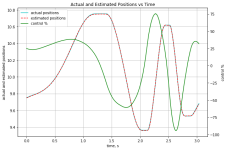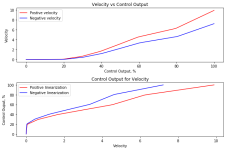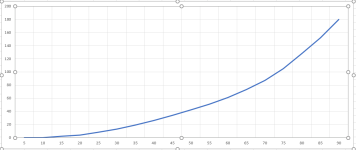MorphuisOGrady
Member
Hi All,
Has anyone any experience in controlling a non linear valve with a PID?
Traditionally this valve is controlled on flow but would like to experiment with pressure and omit the flowmeter eventually.
What I am trying to achieve is a stable pressure differential across the valve so will install 2 pressure transmitters.
As the ball valve to be controlled is nonlinear I was hoping for some ideas on how to achieve this. I am using an AB Compactlogix with the PIDE instruction contained in a PlantPAx wrapper AOI.
I have a valve open position v flow model from the valve manufacturer and can see clearly it's nonlinear.
Secondly if I can achieve this form of control I would like to calculate the flow. From a test from valve supplier I can see the flow vs valve stroke position in steps of 5%.
Is anyone aware of a calculation to get flow for this so I can break it down over 100 points instead (1 % steps) instead of 20 points (5% steps).
Has anyone any experience in controlling a non linear valve with a PID?
Traditionally this valve is controlled on flow but would like to experiment with pressure and omit the flowmeter eventually.
What I am trying to achieve is a stable pressure differential across the valve so will install 2 pressure transmitters.
As the ball valve to be controlled is nonlinear I was hoping for some ideas on how to achieve this. I am using an AB Compactlogix with the PIDE instruction contained in a PlantPAx wrapper AOI.
I have a valve open position v flow model from the valve manufacturer and can see clearly it's nonlinear.
Secondly if I can achieve this form of control I would like to calculate the flow. From a test from valve supplier I can see the flow vs valve stroke position in steps of 5%.
Is anyone aware of a calculation to get flow for this so I can break it down over 100 points instead (1 % steps) instead of 20 points (5% steps).











